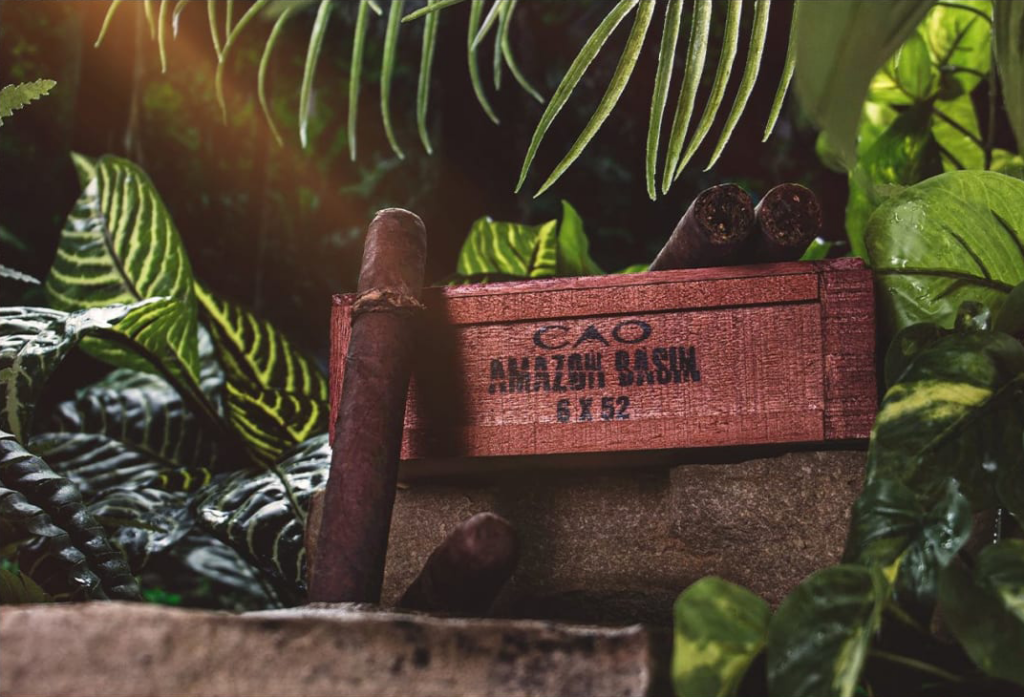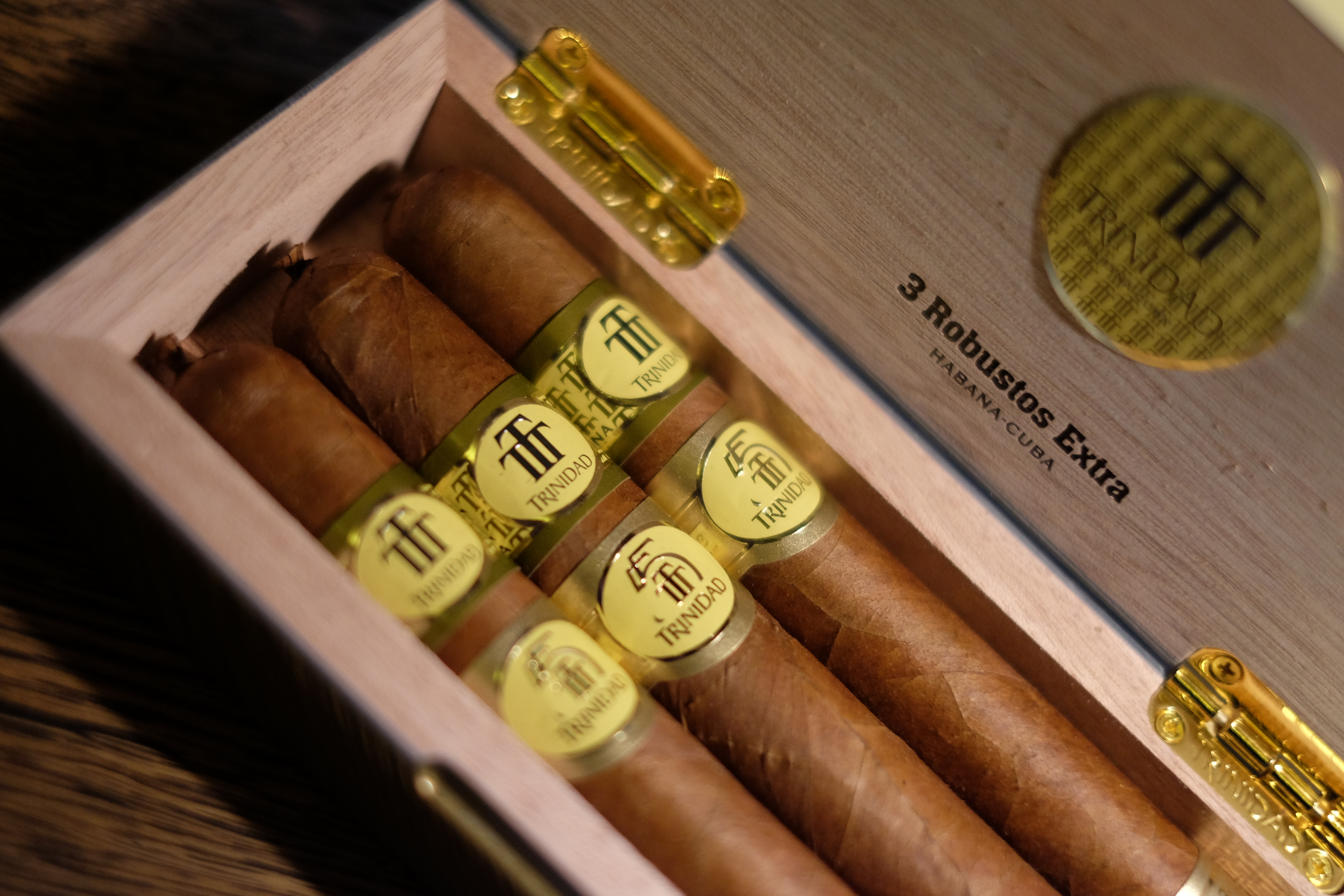The cigar industry’s smokin›
«With Americans smoking three times as many high-priced cigars today as they did in 1993, cigarmakers are once again grinning.»
Das schreibt The Miami Herald heute. Ein spannender Artikel über das Smoking-Business in den USA und ein lohnender Blick über die engeren Grenzen hinweg anyway.

(Bild: Pipeshop.com)
Posted on Mon, Oct. 31, 2005
The cigar industry’s smokin›
With Americans smoking three times as many high-priced cigars today as they did in 1993, cigarmakers are once again grinning
BY SCOTT BARANCIK
St. Petersburg Times
A famous wartime photo of Winston Churchill shows the former British prime minister moments after a photographer snatched a stogie out of his mouth. Churchill appears glum and ornery.
It’s the sort of look you might have seen on the faces of cigarmakers and tobacconists in 1998, when a five-year boom in the sales of premium, hand-rolled cigars abruptly ended, leaving industry players with a glut of inventory it would take years to unload even at cut-rate prices.
Today, sales of premium cigars — insiders call them »sticks» — remain well below their 1997 zenith. But for the first time in years, industry players are grinning again.
Imports of handmade cigars rose 9 percent in 2004, to 282.1-million units, and could rise 6 percent this year to roughly 300-million units, according to Cigar Association of America estimates. In fact, Americans still are smoking three times as many high-priced cigars today as they did in 1993. All of which makes the »bust» look, in retrospect, more like a correction.
Tampa is taking note. Though no longer the manufacturing engine of the U.S. cigar industry, it remains a major supply and distribution hub for premium smokes.
»We still have so many more cigar smokers than we did in 1992 that we’re all happy as clams,» said Gary Bahrenfus, manager of Edwards Pipe & Tobacco, a longtime Tampa retailer.
MALE BONDING
The brisk business of high-priced cigars was evident one recent weekday at Central Cigars, a St. Petersburg shop founded during the height of the 1990s craze.
Men costumed variously in pinstripes, Dockers or tattoos wander in for a smoke, paying from $1.65 to $39 per cigar. Store manager Owen Richason deftly clips and lights their purchases while smoking a $23 stick of his own, a Davidoff Double «R.»
Back in the store’s dimly lit smoking den, beneath a photo of the late cigar-chomping comedian George Burns, four regulars lounge in leather-bound chairs as CNBC murmurs in the background. Ranging in age from 37 to 48, they lunch together most weekdays and hit the 22-seat den for several hours of after-dinner inhaling. The longest-running members have followed the routine for six years. »We refer to them as the Earth Council, because they solve all the world’s problems,» Richason says.
The Earth Council members have several things in common besides gender. They consider themselves conservatives. They are frustrated by the shrinking universe of venues where cigar-smoking is accepted. They sit somewhere on the continuum between self-employed and underemployed. They don’t fear cancer. And they don’t mind spending a few bucks or more for an hour’s worth of calming vapors.
Michael Metzler, 39, owns a used-car dealership in St. Petersburg and invests in real estate. His home has a separately ventilated cigar room. The nameplate on the $500-a-year humidor he rents at Central Cigars reads, simply, «Big Daddy.»
»We come to exchange ideas,» Metzler says between puffs of an Arturo Fuente Flor Fina 8-5-8. »A lot of different business ideas pop up, a lot of investment ideas.» Politics, too, of course.
BUSINESS GROWS
Central Cigars owner Greg Haddad recently added a fullliquor bar. He plans to expand the cigar lounge and is averaging $1,400 to $2,200 in daily revenue.
Prior to the boom, cigar retailers catered to an older crowd. »The axiom in the cigar business was a guy didn’t smoke his first cigar until he was 40 years old,» said Gordon Mott, executive editor of Cigar Aficionado.
Mott shares credit, or perhaps responsibility, for helping usher in a younger generation of smokers. Aficionado, unveiled in the fall of 1992 by Marvin Shanken, the publisher of Wine Spectator, pushed all the right male buttons.
It put manly stars like Arnold Schwarzenegger and Jack Nicholson on its cover, along with an occasional paean to feminine beauty like model Claudia Schiffer. It trumpeted wealth and conspicuous consumption at a time when both were in abundance. It gave well-to-do men a rare cross to bear — smokers› rights.
Young men looking to conquer the world, or simply draw attention, suddenly had a new totem of success that cost less than a steak dinner.
»Without sounding too immodest, if you go back and look at the statistics, there’s a flat line or a slight decline [in cigar sales] from 1980 until the third quarter of 1992,» said Mott, drawing a connection to his magazine’s debut. «In the third quarter, that line starts to turn around and climb.»
Industry leaders agree, crediting Aficionado’s Shanken with rescuing cigars from the maw of their musty image.
»Nobody’s done more,» said John Oliva Sr., president of Tampa supplier Oliva Tobacco Co. «He’s the guy that got all the yuppies. He created that.»
COSTS RISE
The result was palpable. As demand for hand-rolled stogies soared, new cigar shops emerged. Pharmacies, book stores and even gas stations began carrying stock, cigar association president Sharp recalled. The average cost of a cigar climbed.
»It became a fashion statement as much as anything else,» said real estate lender and Earth Council member Todd Jacobson, 37. «It didn’t matter if it was a good cigar. It was all about label.»
Soon, however, demand exceeded supply. Growers didn’t have enough mature tobacco to spare. Startup manufacturers eager to get in on the profits bid up both tobacco prices and factory wages. Shortages ensued.
»There was no time for properly aging» the tobacco leaf, said Bahrenfus, the Edwards Pipe & Tobacco manager. «The less reputable manufacturers were using anything they could to make a stick.»
BOOM’S DOWNSIDE
»At the peak of the boom, some of the worst cigars ever sold in the United States were in the marketplace,» Mott said.
Many of those cigars would remain in the marketplace for years. As the fad began to wear off in 1998, industry players realized they had overshot demand, and many newcomers folded. Aficionado lost 20 to 30 pages of advertising during the first half of the year alone.
Oliva, the Tampa tobacco supplier, lit into those who gravitated into the business without understanding it. «They were just in it for the money.»
Today’s cigar industry is wiser and stronger. Quality, for example, is up, smokers and purveyors agree. The boom gave surviving growers the capital needed to upgrade their farming techniques and the incentive to explore land in additional countries.
St. Petersburg Times researchers Cathy Wos and Carolyn Edds contributed to this report.
© 2005 Herald.com and wire service sources. All Rights Reserved.
http://www.miami.com


